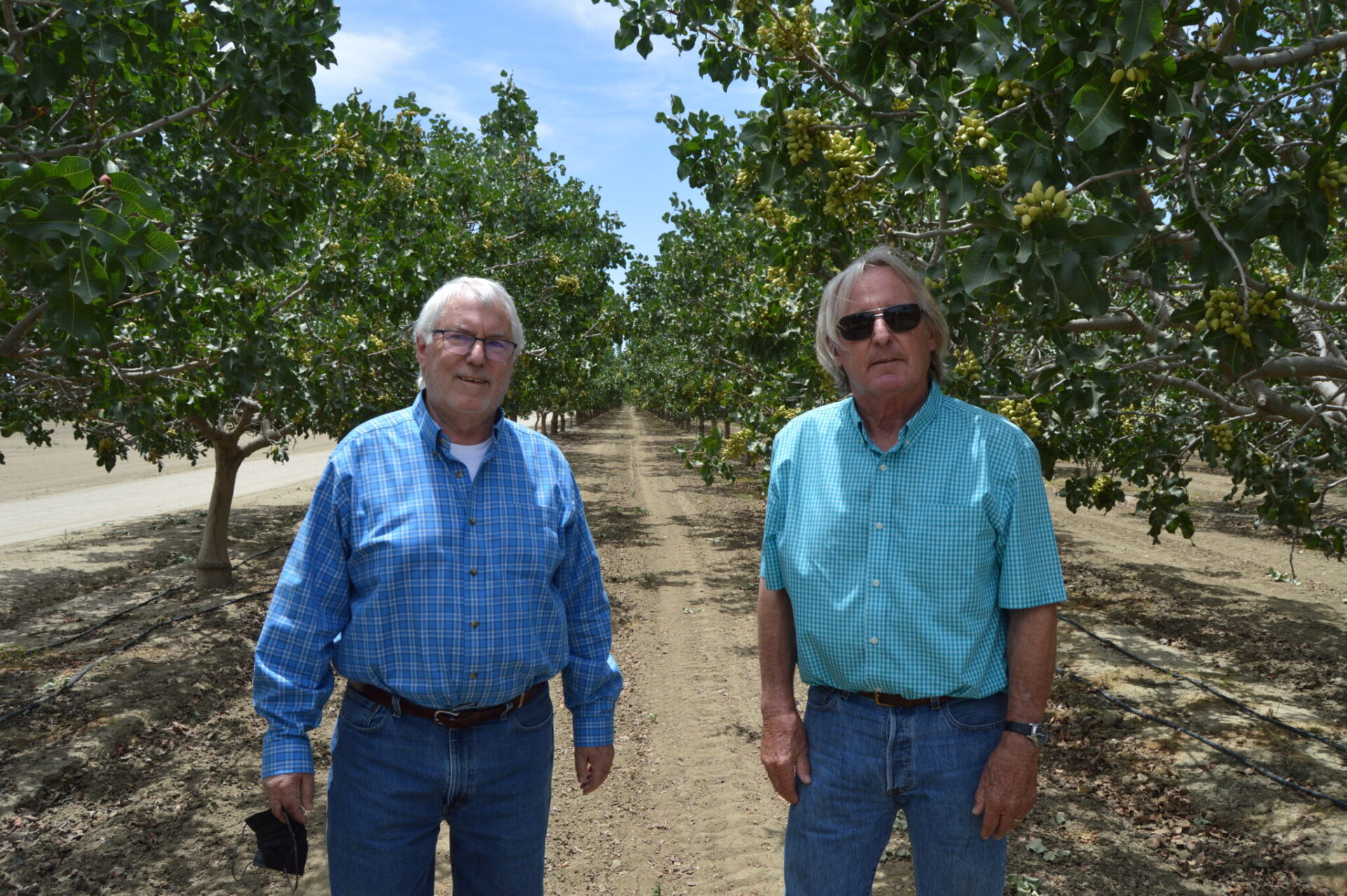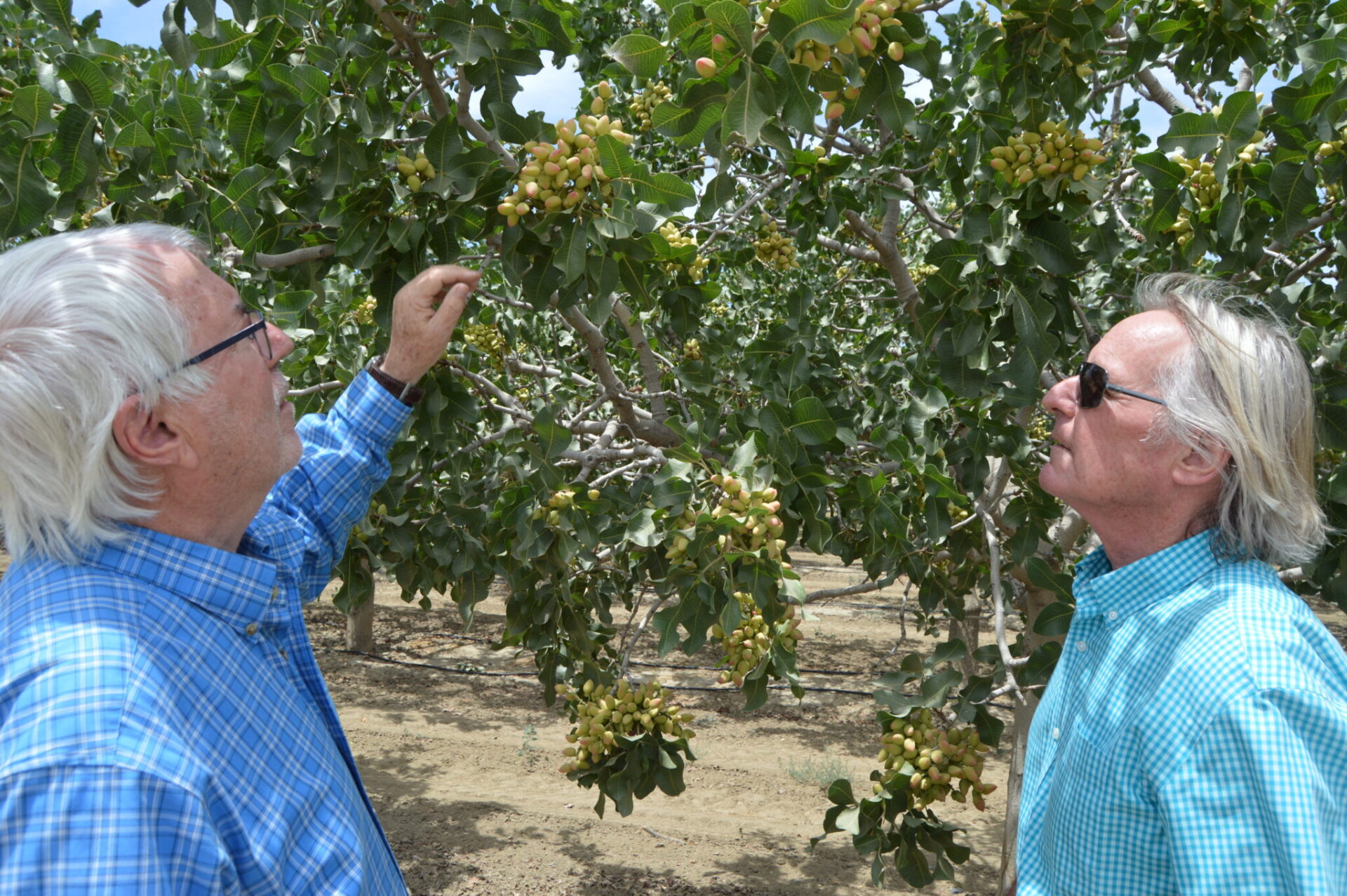
Organic pistachios, long an afterthought, today are experiencing unusually high interest among growers.
The estimated acreage in organic pistachios increased approximately 60% last year, going from what many believe was a long-time state average of between 1,500 and 1,800 acres to 3,000 acres. And growers are expecting more acres to come on board this summer, including from Touchstone Pistachio Company, whose chief operating officer said the company is “poised to become a significant organic grower in the industry this coming harvest.”
“We see interest all over the globe for organic pistachios,” Touchstone COO Mark Sherrell said. “This demand, coupled with our farming efficiencies, puts us in a good place to grow demand, have healthy yields, while ensuring a premium return to the grower.”
The high interest in organic pistachios is driven in large part by the ever-increasing popularity of organic foods, according to growers. Organic sales, according to a recent report from Organic Produce Network and Category Partners, increased 9.3% in the first quarter of 2021 over the same period a year ago. Conventional produce sales in the same period, conversely, increased less than 3%. And, while there aren’t any nuts on the top 10 list of organic food products, some growers and processors are finding good demand for organic pistachios, both domestically and internationally, and growers are bullish about the future of organic pistachios.
“You couldn’t find a product getting better press than organic,” said Steve Couture of California Pistachio Orchards out of Kettleman City, one of the largest organic pistachio producers in California. “We are very optimistic about the future for organic pistachios. We put money into a new building, and we’re committed to staying in it.”
“There could be some rough spots over the next few years as all these acres come on,” said Chuck Nichols of Nichols Farms in Hanford, widely believed to be the largest organic pistachio producer in California. “But long-term, I don’t see it as a phenomenon that is going away. People want organic, and we want to provide it for them.”
Despite a drop in the price and the premiums paid for organic pistachios last year, going organic has been a successful venture for the dozen or so producers who have been in the field. Nichols noted that margins over conventional have been in the 50-60% range in recent years, more than offsetting the increased production costs and the decreases in yield that come with organic production, yield reductions that Nichols said come to about 15-20% in a normal year.
Finding Markets
The hard part for farms entering the organic market is finding outlets for the crop, said Couture, particularly for small producers who can’t meet large orders.
“Ten years ago, one of the large chain stores suggested that they would need at least 2 million pounds of organic to get started,” Couture said, “and there hasn’t been 2 million pounds yet in the industry.”
In recent years, Couture has been able to take advantage of strong demand for organic pistachios in Europe by shipping multiple 44,000-pound containers overseas.
“There is excellent demand for organic foods in Europe,” he said.
His domestic sales, conversely, have remained small by comparison. “We sell a lot of small quantities in the U.S.,” he said.
Domestically, Nichols observed, numerous regional chains have branded or private-labeled organic pistachios. “Costco is a big organic supporter and does significant organic pistachio volume, primarily on the West Coast,” he said, “and Whole Foods, long associated with organic and natural foods, is a significant seller nationwide.”
Gene Zannon of Santa Barbara Pistachio Company, another longtime producer of organic pistachios, said his sales volumes have risen steadily in 14 years of marketing flavored organic pistachios. Zannon, who was one of the first to go into organic pistachio production, sells to retail outlets, like Whole Foods, across the country and at farmers’ markets in California.

Agronomic Challenges
Producing pistachios under an organic regime is easier for some producers than others, according to growers, depending largely on weather conditions and other environmental factors that affect crop production.
Zannon, whose farm is at 3,000 feet elevation, said he benefits from low insect and disease pressure. “We deal with weeds and we deal with a lot of rodents and a lot of the other things others deal with, but it certainly is manageable,” Zannon said.
Nichols Farms, which is located on the west side of the San Joaquin Valley, produces organic pistachios in an area that Nichols describes as very dry with no disease pressure. “It is conducive to organic,” he said.
Even in cases where sites are conducive to organic production, doing so is a challenge, growers said.
“You’ve got to walk it and watch it,” Couture said. “You have to see where the weeds are coming up. You can’t put down an overwintering herbicide. You have to go through orchards and decide where you are going to send guys through with weed whackers.
“Then you have to fight the nutrition, especially trying to get nitrogen to the crop,” he said. The price for organic fertilizer has increased dramatically over the years, he said. “It probably costs four times as much now as it did 15, 20 years ago. And you aren’t going to get as much wood production in your trees, so they are going to stay smaller longer.
“And that is the easy part,” he said. “The biggest issue in organic production is the navel orangeworm (NOW). That is the single biggest sleep-depriving part of the organic business.” Couture said his NOW program consists primarily of mating disruption and winter sanitation. “And we try to get our nuts harvested as early as possible, and we never do a second shake unless we send it to a conventional buyer, because second shakes always have problems.”
Then there are what Nichols described as “black swan events,” where a pest ravages a crop. “With organic, particularly in the pest arena, you can have a black swan event once every eight or ten years where you have substantially lower yield,” he said. “We had that happen once in the history of our organic production, where we had a migrating pest come in (stink bugs) and it lowered our yield by 50%.”
The problem, he said, is there are no rescue sprays when going organic. “You just can’t catch up with it,” he said. The farm, he said, was a little slow to recognize the issue at the time. “We are well aware of them now. It is a learning process.”
Future Outlook
Looking forward, Nichols said the farm is “pretty happy where we are at volume-wise” and isn’t recruiting any additional growers for purchasing organic pistachios for processing and marketing.
“Part of the reason why is because we don’t know what the rest of the industry is doing,” he said. “If there is a whole bunch of acres converted, it won’t be a good short-term financial decision for growers to go organic, and we don’t want to recommend growers do that and take conventional prices and organic costs for the near future.
“There is good demand from the retail trade in the U.S. and we are seeing a little more interest in Europe,” he said. “But it is a fairly thin market at present and I don’t know where margins will go.”
Organic margins dipped last year to about 35% over conventional, Nichols added.
Still, the outlook among organic pistachio growers remains healthy, if not for the short-term, definitely for the long-term.
“In pistachios, in general, we have had a very good run for the last almost 20 years,” Nichols said. “So, we’ve done well in the industry, and organic has shared in that success.”















